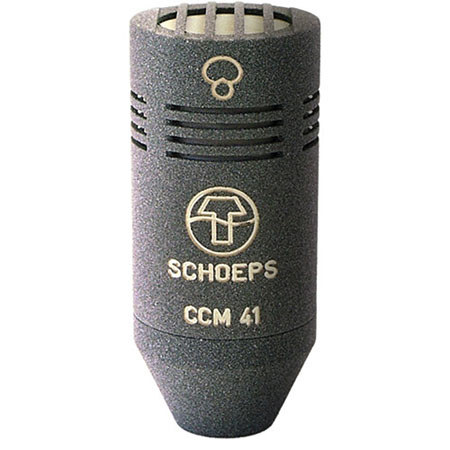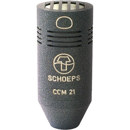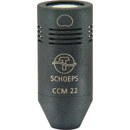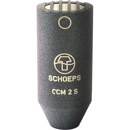
Schoeps CCM 41 L Supercardioid Compact Microphone with Lemo Disconnect, 40Hz-20kHz Frequency Range, 90Ohms Impedance, Matte Gray
SKU: SCCCM41LG
This item is no longer available.
Recommended Alternatives
Share:
Overview
Compare
Specs
Protection
Q&A
Questions & Answers
Reviews about this item
Review Summary
Select a plan in the Add Protection section above and purchase with this product by clicking “Add to Cart”.
TRUSTED PROTECTION PLANS, EXCEPTIONAL SERVICE.
Invest In Your Gear and Peace Of Mind!
Accidents happen. Protect your favorite Adorama products and purchase a protection plan to stay covered from accidental damage, mechanical or electrical failures, and more.
Repair or Replacement
If we can’t fix it, we’ll replace it at no additional cost.
Accidental Damage
Protect your product from drops, spills, and more.
Peace of Mind
Enjoy your gear without fear. We have you covered!
Failure Protection
When regular use of your product over time results in mechanical or electrical failure.
Zero Deductible
We will never charge you a deductible after the purchase of a plan.
Customer-Focused Support
Our claims process is simple & easy and our customer service team is happy to help.
Adorama Protect powered by Extend is available for purchase to customers in the United States. Not available for international or U.S. territories purchases. Plans on open box items do not cover pre-existing damage.
Adorama Protect plans are available for ABS clients. If you have any questions or require assistanse, please call 800-223-2500
Browse our FAQ
Schoeps CCM 41 L Specifications
Current consumption with 12 V
8 mA
Current consumption with 48 V
4 mA
Impedance
90 Ohms
Minimum recommended load impedance
600 Ohms
Low-cut frequency
20 Hz
Frequency range
40 Hz - 20 kHz
Sensitivity
14 mV/Pa
Equivalent noise level
A-Weighted: 15 dB-A
CCIR: 24 dBSignal-to-noise ratio (A-weighted)
79 dB-A
Maximum sound pressure level at 0.5% THD
132 dB-SPL
Length
Without Connector: 1.81 to 2.28" (46 to 58mm)
Diameter
0.78" / 20mm
Weight
1.52oz / 43g
About Schoeps CCM 41 L
The Schoeps CCM 41 L Supercardioid Compact Matte Gray Microphone with Lemo Disconnect is strongly directional. Sound arriving from off axis is attenuated even more than with a cardioid. The pickup is "drier" and less susceptible to acoustic feedback than any other SCHOEPS microphone type (a loudspeaker should not be located directly along the rear axis of the microphone, however).
Its directivity is highly independent of frequency, so that even sounds arriving off axis and reverberant sound are registered without coloration. Consequently, even distant placement of the capsule produces a very natural sound pickup. This is a real advantage over interference-tube "shotgun" microphones, whose directivity is very frequency-dependent - exceeding that of a supercardioid only at higher frequencies. Interference-tube microphones are notoriously sensitive to their position in a room, where the shifting patterns of reflections cause corresponding shifts in sound color.
Schoeps CCM 41 L Features
- Supercardioid with highly consistent directionality throughout its frequency range for music and speech
- High directivity, comparable to that of a short "shotgun" microphone up through midrange frequencies
- Often preferred for use in film sound recording and as a spot microphone in orchestras
Key Features
- Supercardioid with highly consistent directionality throughout its frequency range
- For use in film sound recording and as a spot microphone in orchestras
What's in the box:
- Schoeps CCM 41 L Supercardioid Compact Microphone with Lemo Disconnect
- Schoeps 2 Year Warranty



